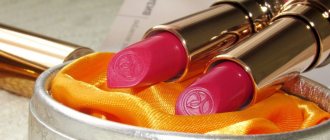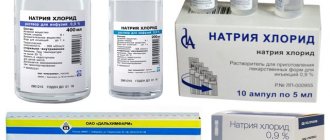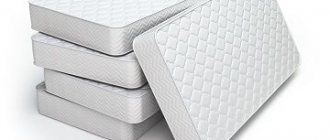An original cartridge for a laser printer is not cheap, and its service life is of great importance to the consumer. Of course, first of all it depends on the intensity of use, so the manufacturer indicates the resource in printed pages. Typically it ranges from 2000 to 4000 pages for different printer models. But in fact, the toner runs out earlier. What is this connected with?
The manufacturer calculates the cartridge resource during testing based on a typical page filled to 5% (meaning page coverage). If the user mainly prints pages densely filled with text or images, the resource can easily be divided into three. If savings are more important to the user than print quality, you can select an economy mode in the settings, which allows you to reduce toner consumption.
As for the cartridges that come with the purchase of the printer, their resource may be significantly lower, since the starting replacement units are considered demo ones. As a rule, they are initially filled by 30-50%.
Ways to determine
The shelf life of cartridges is determined not only by technical characteristics, but also by compliance with the rules of storage and use. To keep the device working longer, it should be kept in a shaded, dry, cool place.
For laser
Subject to proper storage conditions, laser printer cartridges remain functional for 2-3 years. The exact period is determined by the manufacturer. After opening the wrapper, the product is stored without use for about a year, after which it becomes unusable.
The ink powder loses its usefulness if the printer is rarely used for its intended purpose. Therefore, you should not buy printing equipment if you do not plan to use it regularly.
Typically, the packaging indicates the production time and service limit. Less often, only the date of exit from the assembly line or the alphanumeric number of the product batch are printed on the packaging container. Knowing this information and the brand, it is easy to calculate the shelf life.
The date in the production code is indicated in reverse: first the year, then the number. Typically this information is printed on the back of the shipping box.
For example, let’s look at the lot number of the HP 83A black laser toner – 9B05H41A:
- the first digit is the year it went on sale (9 – 2019);
- Latin letter – the month of release of the product in alphabetical order starting from A – January (B is February);
- the next two digits are the day of the week.
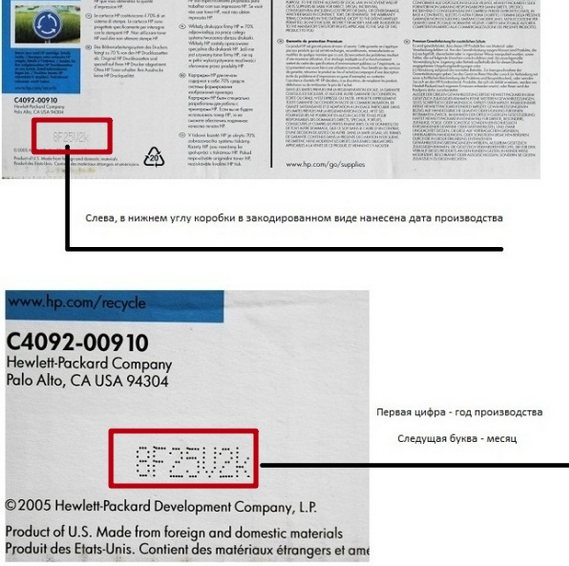
It turns out that the product was created on February 5, 2021. All that remains is to add the operational period approved by the developer to the production day, and it will be clear when to expect the product to fail.
For inkjet
To find out when the inkjet device will stop working, you need to have an idea of its design and functional features.
Based on their structure, toners for inkjet printers are divided into two categories:
- A single system that includes two elements: a head responsible for spraying paint, and a reservoir filled with a coloring composition.
- Separate system. The cartridge only includes a dye reservoir. And the main and most complex part - the head - is located in the printer.
These types of products differ in their shelf life.
An inkjet cartridge inserted into a printer remains operational for about six months. But the spray head, which is part of the printing equipment, functions for about a year.
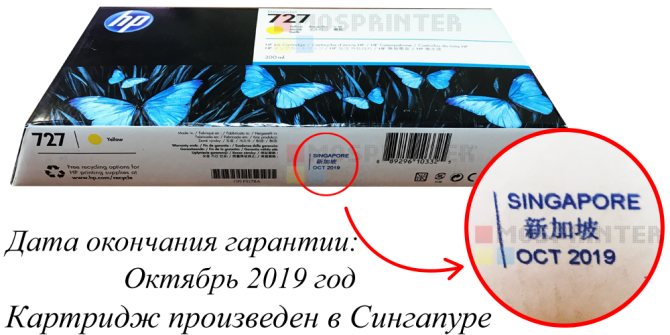
Manufacturers who supply inkjet products to the market usually indicate an expiration date on the packaging. Information about when the product stops working should be found at the bottom right corner of the wrapper.
Terms from popular brands
Today, cartridges are produced by companies from different countries, and each manufacturer can set its own rules of use and shelf life.
Users most often give preference to cartridges from the same manufacturer whose printing device they use.
Some users purchase several identical cartridges at once and refill them with tinting powder as needed.
HP (Hewlett Packard) puts a code on the packaging containing information about the year and month of production.
a 30-month period for using the cartridge from the encrypted date. Inkjet cartridges are accompanied by information about the end date of use.
Xerox brand guarantees 3-year operation of both powder and ink cartridges.
At the end of the package (usually in the form of an ink stamp) information about the production date is contained in 8 digit format, of which the first 4 are the year of manufacture, the next 2 indicate the month, and the remaining ones indicate the day.
Japanese Epson indicates on the packaging of inkjet cartridges only the end date of use in month-year format.
But information regarding powder reserves can be found only after printing a test page.
Canon brand supplies its cartridges for laser devices with different markings. In some cases, the date of issue is stamped on the cardboard, after which 3 years are allotted for use, in others, the date of final consumption is immediately stamped.
Inkjet versions do not have such markings, but practice shows that their safety margin is enough for at least 2 years.
What do manufacturers of popular printers do?
Foreign manufacturers label consumables. But they do it differently, in accordance with the rules of the country where they are located. However, all their methods comply with Russian legislation.
Tip: It is recommended that you purchase cartridges and toners from the original supplier who manufactured the product.
HP
At Hewlett Packard, it is customary to put data on packaging. So, a two-digit code is applied to the container indicating the date of manufacture:
- the first digit indicates the year of production;
- the second letter indicates the order of the month (A - January).
The period of use is 30 months from the date indicated on the box. The company immediately puts an expiration date on ink cartridges.
Xerox
The period of use of toners from this manufacturer is three years. The date is printed on the packaging. The code consists of eight digits. The decoding is as follows:
- the first four are the year of manufacture;
- the next two are a month;
- the last two are a day.
Epson
On the packaging of consumables for the inkjet device, this manufacturer indicates the end of use time in the year and month format. For example, if it says “05.2018”, then in June of this year this material is no longer suitable for use in a printer.
The service life of Canon consumables is 36 months. And the manufacturer applies the markings in different ways. In some cases, it sets the production date, in others, the expiration date.
Service life of cartridges from different companies
Experts unanimously call HP printer cartridges the highest quality and most durable. Service life is about 30 months after production.
Features of HP products:
- The permissible period of use is indicated on the packaging in the form of a code. It includes the date of manufacture and service life;
- The manufacturer guarantees high quality printing for the first 6 months of use;
- Laser and inkjet printer cartridges have different shelf life.
Even products from the same company may have different deadlines. For example, Epson's markings are different because cartridges are made in different cities.
Xerox boxes are marked with the date of issue. The numbers are marked on the end on a special paper sticker or hologram. Their shelf life is about 36 months from the date of issue.
The working period is the same for toners from Canon. The manufacturer promises up to 36 months of excellent quality printing. Some packages are marked with a date with the words “use before”, which means the cartridge must be used before this date.
If you suddenly purchased expired cartridges in a store, the store will be required to accept them back. Always keep receipts and original packaging.
Laser storage conditions
The manufacturer allows 24 to 36 months to use a new powder toner cartridge inside. Important for laser printer toners :
- humidity level no more than 50-60% (usual office or residential conditions);
- ambient temperature from +4 to +35°C;
- darkened place of residence (closet, pantry);
- no shocks or sudden temperature changes.
From the moment the protective shell is opened, the expiration time countdown starts, regardless of whether the cartridge is in use or not.
As a rule, there are no problems with the body, but the toner begins to absorb moisture , and the photodrum begins to exhibit photosensitivity, which affects the performance characteristics of the cartridges.
When unpacked, cartridges last no more than one year.
Refilling the cartridge and how profitable it is
Do you really have to throw away a cartridge when it runs out of toner? Manufacturers of printers and original consumables for them do not encourage multiple refills, because cartridges remain one of the main sources of their income.
However, reusing replaceable cartridges is still possible, which is what a huge number of printer owners use, thus saving 50-80% of the cost of a new cartridge on consumables.
A refilled cartridge has a resource that is only slightly inferior to a new one if the following conditions are met:
- the procedure was carried out professionally, in compliance with all rules and precautions;
- the cartridge was filled with high-quality compatible toner;
- All cartridge parts are in good condition.
In a specialized workshop they show a test page demonstrating the capabilities of the refilled cartridge.
How many times can you refill a cartridge?
Each part has its own service life, and first of all, the photosensitive drum in the cartridge is subject to wear. Depending on the brand of printer and the quality of paper used, its lifespan ranges from 5,000 to 10,000 pages. This means that one cartridge can withstand no more than 5 refill cycles, and the latter will no longer have good print quality.
Other parts of the cartridge also wear out, but a professional specialist can notice and correct the breakdown in a timely manner.
Cartridge recovery
Even after refilling five times, the cartridge still contains parts that are quite suitable for further use, including the housing. There are companies that remanufacture cartridges, replacing all worn parts.
The consumer should remember: non-original parts are used for restoration, since manufacturers do not sell them separately. As an alternative, compatible components that have passed the tests are used. Their resource and quality of work may differ slightly from those characteristic of original cartridges, but minor shortcomings are fully covered by the favorable price.
Manufacturers' measures against refilling cartridges
To exclude the possibility of reusing a cartridge, printer and cartridge manufacturers install a special microcircuit (chip) or fuse into its design.
After the service life has expired, these parts should prevent further operation of the replacement unit.
If the user refills the cartridge without knowing about these subtleties, the device will indeed not function.
In specialized workshops, these techniques can easily be circumvented by replacing the fuse or chip. Often these microcircuits can be reset.
Before taking the cartridge for refilling, you should still study the terms of warranty service for the printer. It may indicate that the use of a non-original or refilled cartridge serves as grounds for refusal of service and repair.
Storing new cartridges
A cartridge in its original factory packaging, subject to storage conditions, can be stored for 3-5 years or even more.
The original packaging protects the cartridge well from external influences, which makes it quite easy to comply with the necessary conditions. However, one of the main components of a laser cartridge is toner, which can lose its properties at high temperatures. Therefore, the main condition for storing a new cartridge is storage in a cool (no more than 25-30 degrees) place, away from heating devices. This will allow you to maintain the necessary properties of the cartridge before installing it in a printer or MFP for 3-5 years.
Overriding ink expiration dates and cartridges that do not have an expiration date
Now let's take a look at the table below and see which cartridges are covered by the ink expiration date override, which are not, and which cartridges have no expiration date at all.
| Cartridge name | Printer name | Ink expiration (failure to function) |
| HP 02, HP 18, HP 38, HP 70, HP 88, HP 177, HP 363, HP 777, HP 801 | HP Officejet Pro K550, K5300, K5400, L7500, L7600 and L7700 series, HP Photosmart 3110, 3210, 3310, 8250, C5180, C6180, C7180, D6160, D7160 and D7360 series, HP Photosmart Pro B9180, HP Designjet Z2 series 100 and Z3100 | For these cartridges, the ink expiration date can be redefined, and after redefinition, work on the old cartridge can be continued. That is, redefinition is possible repeatedly until the cartridge resource is completely exhausted |
| HP 10, HP 11, HP 12, HP 13, HP 14 | HP Officejet Pro K850, HP digital Copier Printer 610, all HP Business Inkjet and HP Officejet D series printers, HP Officejet 7100 and 9100 series, HP Professional (2000 and 2500) series printers, HP Color Inkjet cp1160 and cp1700 | For HP 10 to HP 13 cartridges, operation is possible for 24 months after the warranty expires or 30 months after cartridge installation, whichever occurs first. And for the HP 14 cartridge, operation is possible for 12 months after the warranty expires or 18 months after installing the cartridge, whichever occurs first. |
| All other HP ink cartridges | All other HP inkjet printers | The expiration date does not expire, it simply does not exist. |
Please remember that the information in the table is only valid for new original HP cartridges and does not apply to refilled or remanufactured cartridges.
Therefore, buy only original cartridges.
Storing the cartridge after opening the package
The original factory packaging is a sealed plastic bag. Once opened, it no longer protects the cartridge from environmental influences, including atmospheric humidity.
If stored for a long time in a damp or damp place, the toner in the cartridge may lose its original characteristics. It may begin to fall off the sheet after printing, or the image on the paper will be faded or not across the entire width of the sheet.
Another important element of the cartridge is the photoconductor. It is not available in all cartridges, but only in the so-called “all-in-one”. These are mainly cartridges produced by HP, Canon, Xerox.
The photodrum is not as susceptible to moisture as toner, but if stored in a rather damp room, the magnetic layer may begin to peel off from the aluminum drum.
However, you should not store or dry a wet cartridge in the sun. The photodrum is covered with a photosensitive magnetic layer. When sunlight hits it, the photodrum “lights up”. It is not possible to identify an illuminated drum externally. This only appears during printing - the toner does not stick to the exposed area and there will be a horizontal white stripe (or a significantly lighter one) on the sheet.
Rules for using cartridges
- The use of non-original cartridges will void the warranty on the printing device.
- The list of compatible models for original and non-original cartridges may differ. Before purchasing, be sure to check whether the cartridge is suitable for a specific model of printing device.
- The behavior of the chip that controls toner consumption depends on the printer model. In some cases, after the chip's lifespan has expired, to continue printing it is enough to agree with the printer's warning. Then the cartridge is suitable for refilling with compatible toner. If the printer completely blocks printing after one cycle, you will need to install a new compatible chip (or cartridge) to continue printing. In some cases, the printer requires flashing to use compatible chips.
- When refilling, use only compatible toner. Reusing toner removed from the waste bin is not permitted.
- The cartridge requires a moderate amount of toner. If overfilled, serious printing problems may occur.
- Each cartridge element has its own service life. To continue working, you can replace the failed element (usually the photodrum or one of the shafts); it is not necessary to purchase a new cartridge.
Rules for keeping inkjet
Such cartridges are more demanding on environmental conditions; the following are important for them :
- contents in packaging from the manufacturer ;
- the temperature range narrows to +15-25°C;
- absence of heating devices nearby.
When the temperature rises, the paint for refilling may dry out, and when it decreases, it may lose its quality.
When packaged, cartridges are stored from two to four to five years . Effective operation of an opened cartridge is possible for six months.
Toner shelf life
In powder form, the toner remains shelf life for several years, but it is important that it is not opened and stored in a cool, dark place. exactly one year to use it .
The ink retains its characteristics for the period stated by the manufacturer. Original paint bottles most often indicate a period of two to three years .
When packaged in jars, a sticker is usually attached indicating the end date of use (at least two years).
The printing liquid can be pigmented or water-based; the water-based one lasts longer (4-5 years), however, once you start using it, in both cases, no more than six months are allowed for use.
Ink in bottles is stored only at room temperature and only in the dark .
What does prolonged downtime lead to?
This is an extremely undesirable phenomenon, as a result of which the liquid contents on the print head may simply dry out , and the liquid contained in the container will become noticeably thicker, greatly complicating its further use.
The cartridge for laser printing devices is more durable , but it does not last forever.
Over time, the powder will caking and form lumps, and the photoconductor may become overexposed . This immediately affects the quality of the print, which becomes uneven, with obvious differences in the color density of parts of the text and drawings.
For printing official documents, such low quality is simply unacceptable.
Alternatively, you can clean the cartridge and replace the drum at a service center.
However, these measures will not significantly extend the life of laser cartridges.
Long downtime
Can a cartridge become unusable due to prolonged inactivity?
If used infrequently, the liquid contents will dry out on the print head, the liquid in the container will thicken , making the cartridge impossible to use.
Laser printer cartridges can be stored for a long time, but not indefinitely . Gradually, the powder cakes, gathers into lumps, and the photodrum, since it cannot be completely sealed, exposes some of the material.
The printing will be intermittent, with uneven color density of text and drawings, and such printing is considered low quality and unacceptable for official documents.
Read about expiration dates and storage rules for rechargeable batteries here.
Allowed number of refills
After only three refills, the issue of checking the cartridge for wear of the main components and replacing them if necessary becomes relevant.
Following restoration measures, including washing and cleaning, 2-3 additional refills of the cartridge are quite feasible.
You can refill no more than two times, and the total number of refills is six for inkjet models and 6-15 for laser ones.
Among the new models there are also those that are not intended for refills .
However, experienced specialists in working with printing devices can replace the original components with others that are most suitable; in this case, it is possible to make at least three additional refills.
In order to minimize problems associated with cartridges, you should not purchase or refill them in reserve unless there is an urgent need for large-volume printouts.
Canon and HP printers
There are quite a lot of cartridges of this brand, but today we will talk about the most common options - Laser Jet 5L, 6L, 1 and so on, similar to canon. The official resource of such cartridges is from two and a half thousand to four thousand, but refilling Canon cartridges extends the life of the cartridge by an average of two thousand printed sheets.
The service life of a photodrum ranges from five thousand to ten thousand; a lot depends on the quality of the paper, as well as the quality of the ink itself. It is worth noting that new drums will have a shorter service life than older models. The fact is that new printers print faster, but this is precisely what has a detrimental effect on the photodrum, since they wear out faster. Sometimes it even happens that after refilling the cartridge the drum fails, and this is not related to the refill itself, it only indicates that you got a printer from a low-quality batch.
After the photodrum fails, the cartridge must be restored. In principle, the restoration process consists of replacing the squeegee, photodrum, and toner.
It must be said that you cannot install an original drum, since it simply does not exist, but as for non-original models, you need to know which one you need to buy. Since one manufacturer produces drums that are no good, but the drums of another manufacturer actually do not differ in quality from the original.
Does improper storage affect service life?
Yes. Printer cartridges should not be stored in cold or hot conditions. The temperature should be no lower than 0 degrees and no higher than 24-25.
The expiration date is counted from the moment the box with the cartridge is opened. Sealed consumables are not exposed to external influences and are protected in their original packaging. If you have extra unused cartridges from Xerox, Samsung, Canon and other companies, you can sell any quantity to us at KupimToner.
The printed cartridge should not be left in a room with high humidity. Toner absorbs moisture well and may deteriorate. If it gets on the photodrum it will cause damage due to detachment of the magnetic layer.
Do not leave cartridges in the light - they do not tolerate exposure to ultraviolet rays.
It is recommended to print only on special paper. It is better not to use already printed sheets, written drafts and other types of paper. Make sure there are no staples on the sheets.
For cartridges with opened packaging
In addition to observing the temperature regime for the printing element after opening the package, a number of other measures will need to be taken to increase storage time without any negative consequences for subsequent printing. The main requirements relate specifically to humidity.
If the cartridge is stored for a long time in a fairly humid room, then there is a high probability that the coloring matter will absorb moisture. It is clear that this negatively affects the toner. As a result, the print will be pale and uneven.
All this is caused by changes in toner characteristics. Therefore, it is important to avoid long-term storage of the cartridge in rooms with high humidity.
Toner expiration dates
Expiration dates vary for different types of toners.
Powder
Toner in powder form is good for several years before uncorking, if you keep it in the dark and in a cool place sealed by the manufacturer.
If the powder was in a warehouse where the temperature is below +10°C, then after the packaging has entered a warm room, it should be kept without opening for at least 3 hours, otherwise due to condensation the paint will become damp and will lose its flowability.
As soon as the package is opened, from that time on the dye becomes more sensitive to light and temperature, and the shelf life has a maximum period of 1 year.
How is it determined
GOSTs in Russia are developed on the basis of annexes to interstate agreements. These are available only with certain countries - within the Customs Union. And cartridge consumables are produced in other countries. Therefore, there are simply no exact state standards for them.
However, product distributors operate within the legal framework of the Russian Federation. They are subject to laws, including the following:
- No. 2300-1 dated 02/07/1992 “On the protection of consumer rights”;
- No. 14-FZ dated January 26, 1996 “Civil Code”.
Article 472 of the latter contains a rule on determining the shelf life of goods. There is also a rule that the manufacturer is obliged to transfer the product to the consumer, taking into account such a period. That is, cartridges and toners must be available to the consumer within their expiration date.
Attention: legislation requires manufacturers and exporters to inform consumers about the expiration period, for example, by putting data on the packaging of goods.
Article 472 of the Civil Code of the Russian Federation “Shelf life of goods”




